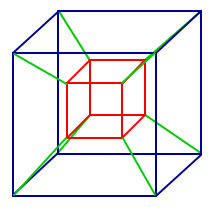The Fibonacci numbers are generated by setting F0 = 0, F1 = 1, and then using the recursive formula
Fn = Fn-1 + Fn-2
to get the rest. Thus the sequence begins: 0, 1, 1, 2, 3, 5, 8, 13, 21, 34, … This sequence of Fibonacci numbers arises all over mathematics and also in nature.
However, if I wanted the 100th term of this sequence, it would take lots of intermediate calculations with the recursive formula to get a result. Is there an easier way?
Yes, there is an exact formula for the n-th term! It is:
an = [Phin – (phi)n] / Sqrt[5].
where Phi = (1 + Sqrt[5]) / 2 is the so-called golden mean, and
phi = (1 – Sqrt[5]) / 2 is an associated golden number, also equal to (-1 / Phi). This formula is attributed to Binet in 1843, though known by Euler before him.
The Math Behind the Fact:
The formula can be proved by induction. It can also be proved using the eigenvalues of a 2×2-matrix that encodes the recurrence. You can learn more about recurrence formulas in a fun course called discrete mathematics.
How to Cite this Page:
Su, Francis E., et al. “Fibonacci Number Formula.” Math Fun Facts. <https://www.math.hmc.edu/funfacts>.
Fun Fact suggested by:
Arthur Benjamin

